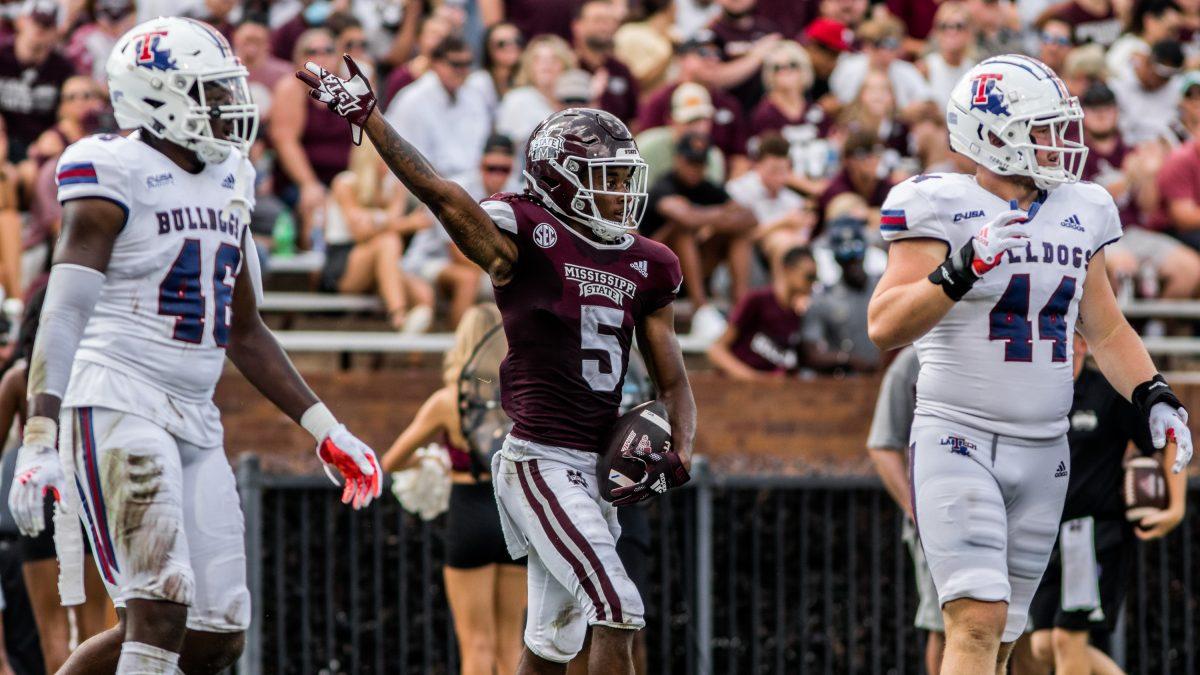Within the athletic budget, there is one constant. Mississippi State won’t always need to add to its football stadium or print 50,000 T-shirts, but to keep signing athletes, the university must give them scholarships.
Take football, for instance. The NCAA allows Division 1-A schools to give full scholarships to 85 players. To reimburse the school for the money spent on free rides, the MSU athletic department dips into the Bulldog Club fund.
“That’s where the alumni give money to the school for basketball and football priority,” said athletics director Larry Templeton. “The priority is based solely on the annual donation.”
So if an alumnus wants his luxury box at Davis Wade Stadium to be a little closer to midfield, he might have to pay for another student-athlete’s education.
A booster, however, does not ultimately get to decide the sport to which his or her money goes.
“We don’t designate those funds; it goes into the Bulldog Foundation, and that’s how we pay for our overall athletic program,” said Samye Johnson, MSU’s associate athletic director for women’s sports. “I think we’ve tried to take on the philosophy that everything that’s given to our Bulldog Club, we try to use that money to help all our programs.”
Donation to the Bulldog Club isn’t at all limited to MSU graduates. It’s strictly about who can support the athletic program.
In turn, the athletic department will always support the teams as much as NCAA rules allow, Templeton says.
“The NCAA has scholarship limits on each sport,” he said. “We’re always going to give them the max. That’s common across the Southeastern Conference. I don’t think it’s common across the board.”
Making more from less
Division 1-AA schools like the University of Maine must abide by more strict scholarship limitations. For instance, the football program can only give the equivalent of 63 full scholarships to the players.
Unlike MSU, in which football is a head count sport, football at Maine is an equivalency sport. The NCAA dictates which category each sport will fall under at a given school.
“In the head count sports, each individual counts as one scholarship. It’s a full scholarship,” Johnson said.
But for equivalency sports, the value of a full scholarship may be divided among a few athletes.
“The main reason would be that a lot of your sports like your baseball and your softball, which need more players, they feel like they can divide those scholarships out,” Johnson said.
So for Maine and the other 1-AA schools, it is legal to give up to 85 scholarships, but they would not all be free rides. As far as paying for the scholarships, Maine at least has an advantage over private schools.
“Compared to a school like Northeastern that’s not a state school, our cost of scholarships would be a lot less,” said Brent Williamson, Maine’s assistant athletic director for public relations.
Still, in order to compete, Williamson said, the football program must carefully watch the money it gives.
“I think the main thing is, when you don’t have as many scholarships to give, you have to be more careful who you give those scholarships to,” he said. “I think our coaching staff has used them really wisely on different players.”
Title IX limitations
Since Title IX came out along with the Education Amendments of 1972, schools have had to make adjustments within their athletic departments.
MSU’s athletic department, in order to follow an SEC-enforced rule, added softball and women’s soccer in the late 1980s and pulled men’s indoor track in the early ’90s.
“When the SEC adopted a policy that each SEC school would have at least two more women’s sports than male sports, that was considered gender equity,” Johnson said.
There are three means by which a school can comply with Title IX. The first alternative, which MSU has chosen, is to ration the number of male and female athletes in accordance with the ratio of males and females attending the school, give or take 5 percent. This does not mean, however, that scholarship money has to be equal.
“It’s what we call “proportionality,” Johnson said. “A lot of people have the misconception that everything has to be equal as far as scholarships, and there’s just really no way because of the numbers in football. But two more sports helps (with proportionality).”
Budget, Part 2: scholarship use
Donate to The Reflector
Your donation will support the student journalists of Mississippi State University. Your contribution will allow us to purchase equipment and cover our annual website hosting costs.























































































